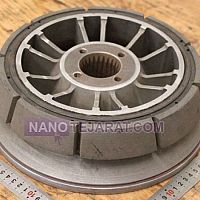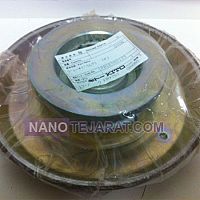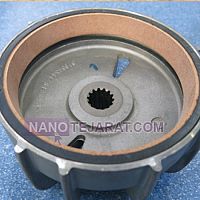


| Exporter,Importer,Manufacturer,Wholesaler,Retailer | |
| Tehran | |
| 09122003350 | |
| lentmarket@gmail.com | |
The brake lining used in a Demag 250 kilogram hoist is a critical component that generates the required braking torque and maintains load holding performance under dynamic conditions. This lining typically works with a conical or flat brake disc and supplies a controlled friction coefficient to manage braking energy. Its engineered surface distributes pressure evenly across the disc and prevents localized wear. For a 250 kilogram hoist, the braking torque usually falls within several tens of newton meters, which requires a lining capable of stable thermal dissipation. The material generally combines industrial resin with heat resistant fibers to maintain consistent friction during repetitive cycles.
This lining is produced according to safety standards defined in DIN and EN regulations, ensuring reliable stopping capability even in unbalanced load scenarios. The lining thickness is typically a few millimeters, and the maximum allowable wear is specified by the manufacturer to maintain torque accuracy. A correct lining for a 250 kilogram capacity must support frequent start stop duty with minimal fade. Using an original high density lining preserves nominal braking torque, reduces vibration, and prevents excessive air gap growth. Selecting a lining with uniform compression strength and elevated thermal resistance increases the lifetime of the entire brake system.
WEBSITE: 250kg demag hoist conical brake disc Iran

The 250 kg hoist e.g. Demag DC‑Pro 2‑250 1/1 is specified in publicly available datasheets with load capacity, hook path e.g. 5 m, lifting speed ~ 8/2 m/min, reeving 1/1, motor power 0.36/0.09 kW, protection class IP55, insulation class F, and duty rating FEM 2m+ for medium load spectrum. The technical brochures for Demag chain-hoists mention that “gearbox, brake and slipping clutch are maintenance-free for up to 10 years” for many sizes and that the brake requires no adjustment and offers reliable load-holding thanks to a regenerative braking design.





